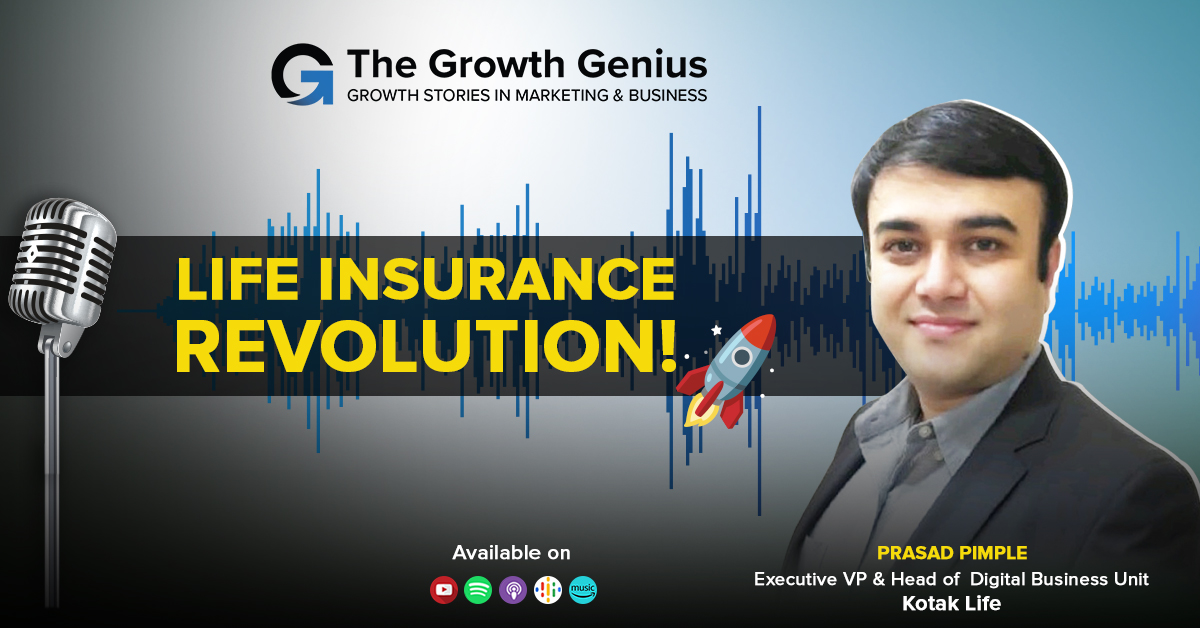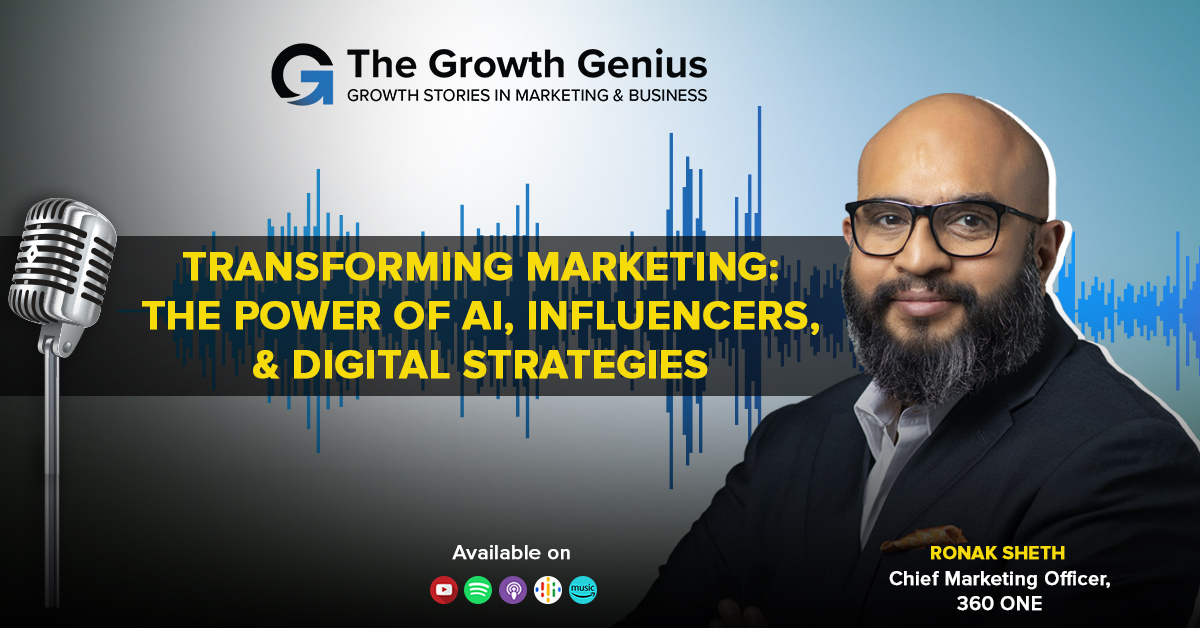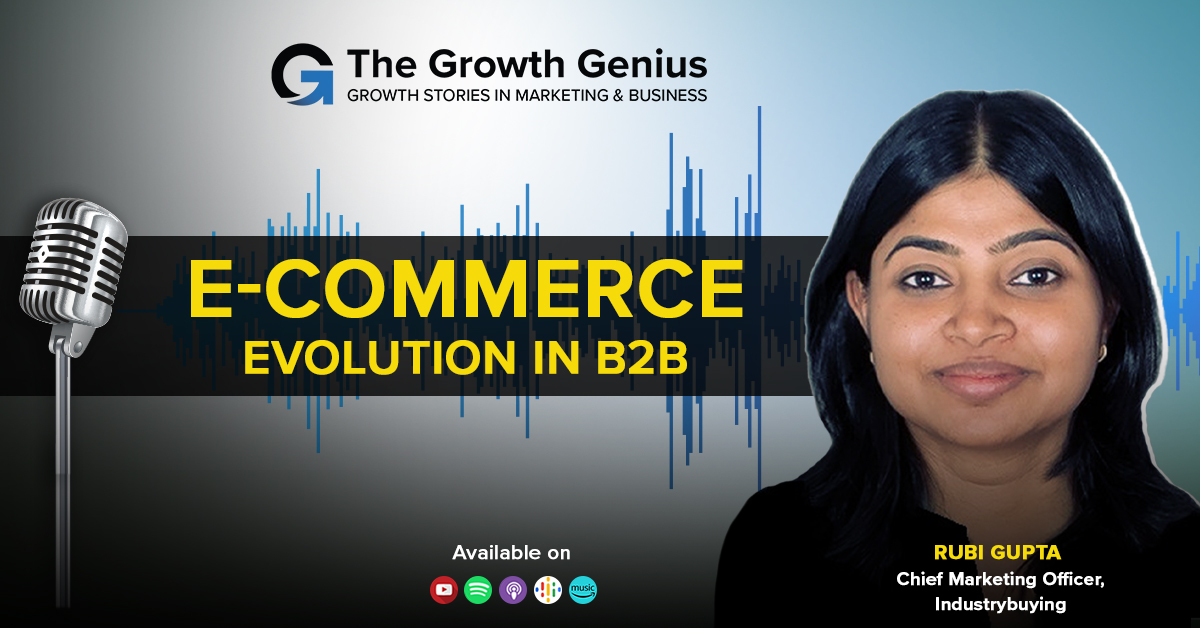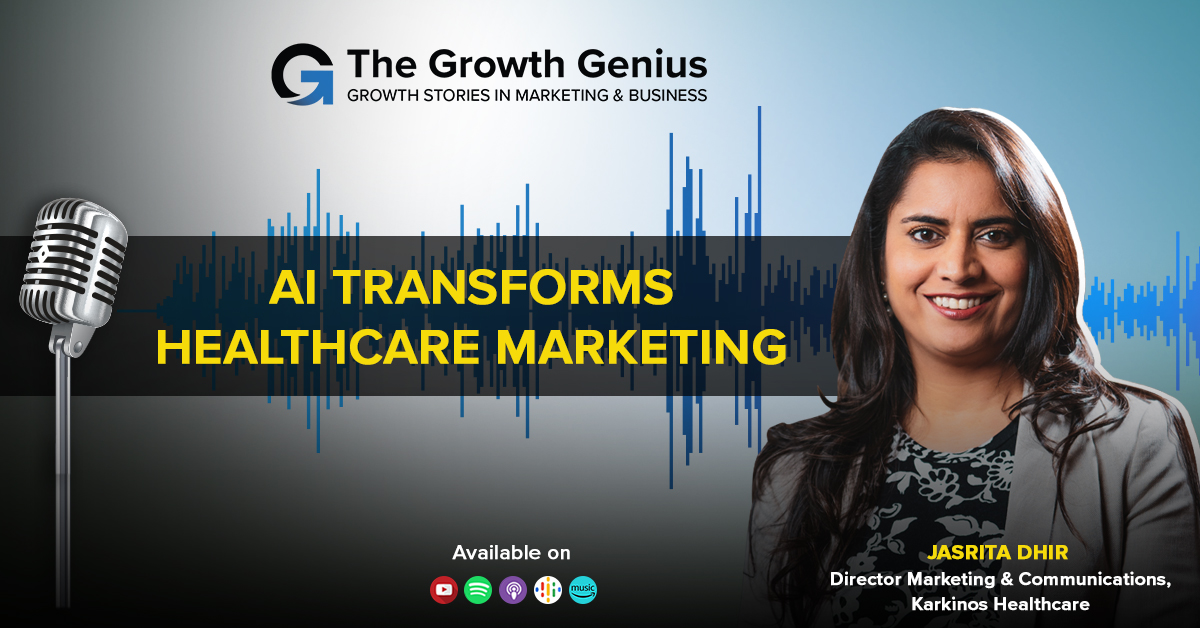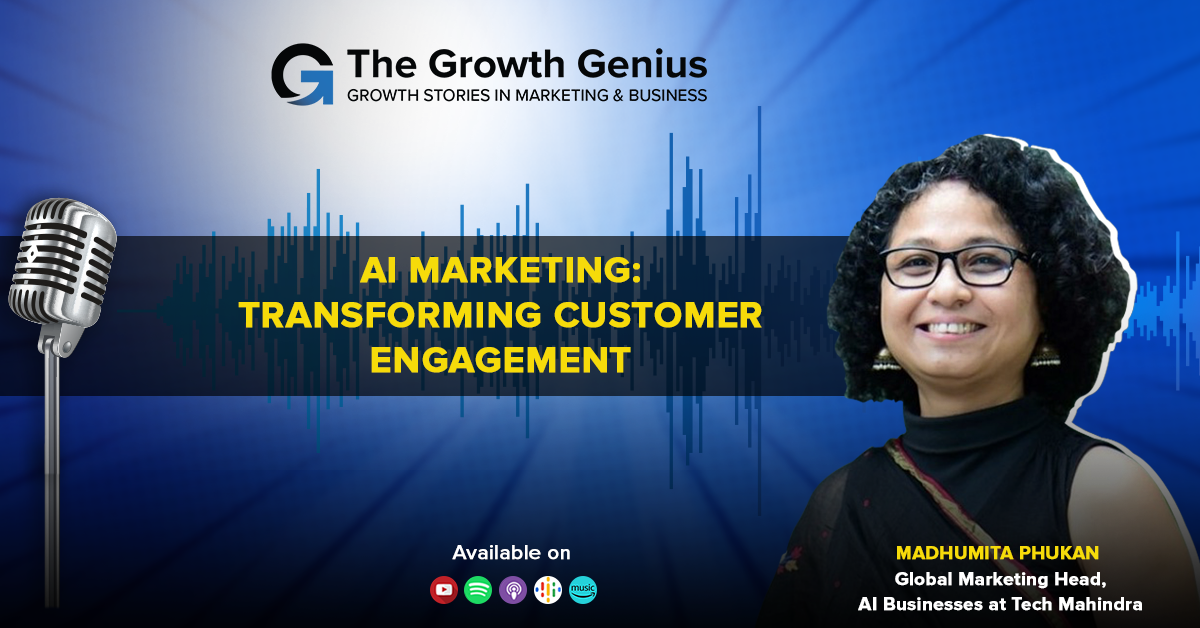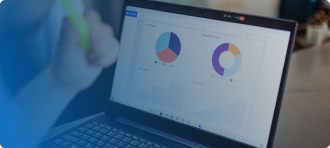
Witness an Increase in your ROI
Unlock higher rankings, quality traffic, and amplified conversions through tailored award-winning SEO strategies.
|
Getting your Trinity Audio player ready...
|
Listen on your Podcast app
Summary
Bank Jago is an Indonesian digital bank that has gained significant attention for its innovative marketing strategy. The bank focuses on targeting millennials and Gen Z customers by offering a range of digital banking services. Their marketing strategy revolves around creating a seamless and personalized customer experience through the use of technology. Bank Jago leverages social media platforms and influencers to reach their target audience and build brand awareness. They also prioritize customer engagement by providing interactive features and rewards programs. By combining technology, social media, and customer-centric initiatives, Bank Jago has successfully positioned itself as a leading digital bank in Indonesia. Their marketing strategy has played a crucial role in attracting and retaining customers in a highly competitive market.
Key Take Aways
- Customer-Centric Approach: Bank Jago’s marketing strategy focuses on understanding and meeting the needs of its customers, which is crucial for any digital marketer aiming to build a successful brand.
- Personalization: The bank leverages data and technology to provide personalized experiences to its customers, highlighting the importance of tailoring marketing efforts to individual preferences.
- Omni-channel Presence: Bank Jago utilizes multiple digital channels, including social media, mobile apps, and websites, to engage with customers, emphasizing the significance of an omnichannel approach for digital marketers.
- Content Marketing: The blog highlights Bank Jago’s use of informative and engaging content to educate and attract customers, emphasizing the value of content marketing in building brand awareness and loyalty.
- Influencer Marketing: Bank Jago collaborates with influencers to promote its products and services, showcasing the effectiveness of influencer marketing in reaching and engaging target audiences.
- User Experience: The bank prioritizes providing a seamless and user-friendly experience across its digital platforms, emphasizing the importance of optimizing user experience for digital marketers.
- Data-Driven Decision Making: Bank Jago utilizes data analytics to gain insights into customer behavior and preferences, highlighting the significance of data-driven decision-making for digital marketers to enhance marketing strategies.
- Continuous Innovation: The blog emphasizes Bank Jago’s commitment to innovation, encouraging digital marketers to stay updated with the latest trends and technologies to remain competitive in the digital landscape.
Read Transcript
Cedric Dias:- Now, many marketers think that building great brand experiences is all about budgets. If I have a big budget, I can do this; look at Nike; look at this; look at that. They have such big budgets but what I’ve found is that it’s not necessarily true. Now I’m going to talk about a campaign called Unstoppable which was a digital branding campaign for the organization, which transcended not just the products but ultimately led to having a branding impact on the overall brand – the OCBC brand itself.
Shelly Singh: – For a marketing organization how important is talent, can you explain?
Cedric: – Yes, It’s a passion of mine. I believe it all starts with people. Talent, especially good talent is always going to be the reason why organizations will have a cutting edge over competition, beyond the product and the product offering. It’s been a big change and gone are the days of hand holding talent or the pyramid structure of working or three bosses approving. Those days are getting really shorter.
Shelly:- Hello and welcome to the Growth Genius series brought to you by DMAAsia and Infidigit. My name is Shelly and I’m the Country Director Americas at Infidigit. I’m also the Founder and Director at DMAAsia. In this Growth Genius series, the world’s best marketers and business leaders are interviewed about the brands they have worked on, their successful campaign strategies, how they got noticed by their customers and how they delivered better customer experiences to drive growth. Today our guest is Cedric Dias. Cedric heads marketing for Bank Jago. Bank Jago is the leading digital Bank in Indonesia, designed as a life-centric financial solution that enables consumers to live their lives to the fullest and brings them closer to their dreams. As a marketing lead Cedric is responsible for all aspects of marketing from branding to customer acquisition through loyalty, with a goal to make Jago the best bank in Indonesia. Previously, Cedric was the head of digital marketing for OCBC Consumer Bank in Singapore. Prior to that, he led the digital business in Singapore for Havas Media and headed the social media brand Socialyze for four years. A very warm welcome Cedric.
Cedric: – Hello and thanks for having me on, Shelly.
Shelly: – Great! To start with tell us about your background and how you got started in advertising and direct marketing particularly your interest in talent?
Cedric: – Yeah I mean that’s an interesting story. I am what you call an accidental marketer and I found my true calling totally by chance. So when I completed my Bachelor’s in Engineering a long time ago, I realized that it was not something that I wanted to do and so opted to go in for my MBA. This was in the late 90s when there was a big finance boom and finance was the talk of the town and even then, I always thought that I would make a career in finance. But as luck would have it, I somehow got hooked onto marketing and took up a marketing course. Since then, it’s been all I’ve done for the last 25 years. In fact it was my first ever job with Dabur in India which made me realize that this was the career path for me. The great thing about marketing and you would have seen this through my career history, is that it does not need you to be in any one sector or industry. I say that because I’ve been in different sectors in different markets for almost all of my career with only having repeated one sector, twice.So, it’s really something that I feel I have been able to grow, to learn and to adopt marketing as my true calling. After I left Dabur, there was an opportunity for me to come to Southeast Asia with Western Union. That again opened up my eyes to regional marketing and growing brands in multiple markets to multiple target audiences. So, this is where I’ve loved, I have learned and I have grown in marketing, in this part of the world that is Southeast Asia and South Asia for most of my career. Besides building brands and organizations in Southeast Asia, I think one of the things we’ve spoken about is my interest in talent in the organization. My interest in talent sparked very early on in my career after I came to Singapore. I was enrolled in a mentorship program where I was a mentee in Western Union. And that really got me hooked on the reason why we need to grow talent and how growing talent is important. I was a young talent in a large organization, a multinational organization and finding my feet in another country was a challenge. Mentorship played a big role in me being who I am today. So that sparked my initial interest and where I built on that, was in my role at Havas Media where I started taking up digital. At that point digital was literally booming. It was starting to boom in Southeast Asia and all I had in my team were a bunch of 20-year-olds, very young, talented, knowing digital, knowing the new technology but really rough at the edges when it came to interpersonal skills, dealing with stakeholders and the likes. So, that really got me interested and since then talent building and organizing structure has been a big passion for me. As part of this, I have been formally teaching digital marketing at various institutions since 2014 and I have formally and informally mentored about 25 people over the last 10 years or so in Southeast Asia.
Shelly: – That’s quite interesting. So let’s break this into two parts. One is your role in building brands and the other is growing talent. Let’s start with the brand. Considering your experience in creating engaging customer experiences, can you please tell us about how a well thought out brand experience can be a significant growth driver?
Cedric: – Yeah, let me start with the brand then. Good! I’ve had the fortune to work across different brands and different life stages across the markets I’ve worked in. Starting with a brand which probably only Indians will know Lal dant manjan in Dabur which is a very rural focused brand but a very large brand to a Fortune 500 company like Western Union and then OCBC which is like the second largest bank in Southeast Asia and today Bank Jago which is a disrupter but someone which is gathering great attention in its own right because of the way it is positioned in the market. In each case the objective was to ensure that there are two things that you need to do, one is a differentiated customer experience and the second is to ensure that the customer gets an emotional and rational benefit from the brand experience. This all starts, I found across the brands, whether it is a rural brand or whether it is a Fortune 500 brand it all starts with two things. One, look inside, what is the business challenge you’re trying to face because even the same brand at different times in its life stage will approach things differently. The second which is very important, I think this will be no secret to all the marketers out there, is customer Insight. Using both it becomes simple, simple mind you, not easy to craft great brand experiences which connect the customer and also energizes the entire organization. Everyone rallies around a good brand within the organization. It gives meaning, it gives trust and it gives a sense of achievement to all the people within the organization beyond making a difference in the business. Hence I’ve seen once you connect these two and create meaningful experiences, it creates a positive impact, ultimately on the results, very easily. Now many marketers think building great brand experiences is all about budgets. If I had a big budget I could do this, look at Nike, look at this, look at that, they have such big budgets. But what I’ve found is that it’s not necessarily true. If you can crack what is a great customer insight, built into what your brand stands for, then you will find that this really makes a big impact and ultimately very quickly generates good business results.
Shelly: – So, can you give us examples of campaigns that have created these experiences and what in your mind, are the factors that make a difference, something our listeners can take back?
Cedric: – A good question actually, so I can talk about a few campaigns across the organizations I have worked with, at different times. I will maybe stick to the last four or five years because I think it’s more relevant in terms of the current times or how brands get built and what our listeners can take back. So, for the first part let me talk about two examples one with OCBC and one with Bank Jago. Most of you may not be familiar with OCBC but it is what we call a challenger bank. It’s the number two bank and as we know number two always has to work much harder. We are not only trying to go after the leading organization but we’re also protecting our turf against competition that’s coming in. We have to play two battles, not only go aggressive but also play defensive. I’m going to talk about a campaign called Unstoppable which was a digital branding campaign for the organization which transcended not just the products but also led to having a branding impact on the overall brand, the OCBC brand itself. In the late 2015’s or around 2016-17, digital was becoming the big thing. Today, of course digital is everything but at that point digital was just increasing and not only OCBC but all the banks and all the institutions were saying we are digital, we are digital. So, how could OCBC stand out in a crowded market, relate to customers and then have a positive impact on both it’s branding as well as business metrics. So, the challenge was very obvious, we wanted to stand out in the market. The internal that we were talking about was the internal challenge of what do we want to achieve. We want to have a positive brand experience that is differentiated and makes customers clearly aware of why OCBC is better than the others. tThat’s the first one and the second part we realized was customer insight. Customer insight we found, as the world is changing, was that customers evolved to a point where they wanted to see what keeps us ahead, what makes us different from other people and what helps me achieve my goals and my dreams. People want to achieve success quickly so we came up with this one-word branding for our digital banking experience called Unstoppable and it seemed to encompass both what OCBC stands for and aspires to be. Secondly, is it also connected to the customers from their aspiration perspective. So it was a very good mix of where the brand and the customers intersect. We launched this in a way that really connected the customers, it showcased all our Products and Services , took real- life products and blended them around why it is making the customer Unstoppable and hence OCBC Bank also being Unstoppable. It was a huge success whether it gained awareness or brand recognition. Most importantly the value in it for me was that the entire organization rallied around it. We also saw real lifts for each of the products that we featured around the Unstoppable umbrella which made a big difference to the brand. So that’s what I’m very proud of because it actually lasted for two or three years with not just a hit and run campaign but really made a meaningful difference to the brand. The second is more recent in fact it’s just late last year for Jago which has a sub-brand called Jago Sharia. Indonesia as you know is a Muslim majority country and Sharia banking is very important for many Indonesian Muslims. So Jago being also a digital disrupt launched Jago Sharia as one of its digital banking offerings. Now the challenge was the same, how and why should customers consider Jago Sharia for their banking versus the traditional Sharia banking. The second was that we needed to not only connect with customers but also to explain to customers very clearly that we adhere to the Sharia principles. One of the insights we found was that customers’ very first question is that they want to know more about it rather than the banking benefits, or whatever you get from the offering. They wanted to know, do you adhere to Sharia principles so we hit upon just one term called Alhamdulillah Jago Sharia. The entire insight around here was that whenever Indonesians have something good or whenever something good happens to them, they say Alhamdulillah. This is almost an expression of happiness, of thanking God. With that we had Alhamdulillah Jago Sharia and created this whole campaign around Alhamdulillah moments, where Jago Sharia starts becoming the reason why you say Alhamdulillah in your daily life. The very aspect of just using Alhamdulillah started associating us with a true Sharia offering and we utilized a jingle, already existing in the market and used that to play out Alhamdulillah Jago Sharia. And guess what? Within three months the second largest source of awareness was things like Spotify where we started playing the jingle, because that really caught on. The association of Jago Sharia with Sharia banking, with the true Sharia principles, went up by almost 2x. So we really hit our goals as you can see here. It’s about experiences and really connecting the brand with what it stands for with a true customer insight of what will connect to them easily. I hope that answers your question.
Shelly: – Great examples and this is very insightful, so now let’s go to the next part where you have stated that the key driver for a marketing organization is talent, can you explain that?
Cedric: – Yes, it’s a passion of mine. I believe it all starts with people. Talent, especially good talent is always going to be the reason why organizations will have a cutting edge over competition, beyond the product and the product offering. Product and product offering can be copied and can be over a period of time overtaken and you have various examples of that. I believe that talent will keep the company ahead. Now things have changed and with organizations getting flatter and marketing getting more and more real-time, we don’t have time to wait for two or three months for a campaign. Hybrid working has made a big change and gone are the days of hand-holding talent, pyramid structure working and three bosses approving; those days are getting really shorter. This means that marketing is going to rely on ingenuity, the execution capability and the ability to stand up, not only at the leadership level, but at every level in the organization. That means that talent is going to make it or make an organization successful. The other big change beyond what has changed over time with organization structures is the active use of technology., More now than even two years ago, technology is being used very actively when it comes to marketing and building creatives to media, even customer experience requires the knowledge and application of technology. It is something that is demanded across the board as a general need. Today in my organization or the two organizations I’ve joined in the past, even when you were an intern we asked for some basic technology knowledge, before you could join. At least you were required to know for example Adobe photoshop or HTML CSS etc., t because without a little bit of technology, it was very difficult to work. So you’re right as one of the things that you will say, but h Cedric there has been marketing talent all over. Talent marketing is not a new space, there’s so much talent but that’s where you have to separate good talent from just talent. From what we’ve spoken about and we’ll talk about later, it’s really going to make a difference to how organizations are perceived and how they succeed.
Shelly: – That’s very interesting. So how does this play into the structure that you have mentioned?
Cedric: – Yeah very good question. So the evolving talent landscape like we spoke about means the way marketing is going to be delivered and how you maintain and grow your talent is going to change now. When I started my career with Dabur more than 25 years ago, it was very hierarchical. If I look back now it is not something that can deliver optimal results today. Today ‘s marketing structure is much more matrix in a way where you have multiple specialists supporting the marketing, a core marketing team, people, research, performance, media, digital marketing, and marketing technology. So you have a mix of specialists and generalists working together in a very flat structure. This will allow for a very different structure from the way it is. You hear of things called agile, you hear of things called matrix organizations, now not everyone can write a similar structure but I do believe that components of these will have to come together to make organization structures successful. No one size fits all because even in the organizations I have been in, the last two or three had very different structures. But what works for you, effectively what’s going to happen is that this Matrix kind of a structure will happen more than very silo-ed marketing.
Shelly: – Great so in your mind what are the guiding principles that organizations look for when it comes to talent?
Cedric: – I would break this up into two parts. The first is looking for talent, the second is retaining and growing talent because both are important. At some point you’re looking but retaining and growing your top talent is also very important. In the first part the principles I would look for in my organization and I would suggest that this should definitely be part of whatever organizations are looking for in their talent, would be three things. And this applies across all levels not just across junior but middle and even mid to senior levels as well. The first is adaptability and flexibility. Things are changing so much, so how do you adapt real-time to external factors, internal factors, technology, competition, adaptability and flexibility as roles are changing. In fact, you know one of the things I find is that people come and tell me that Cedric I was hired for this role. How can they make me do this? Why is my role doing this?. So adaptability is very important, just because you’re hired for something doesn’t mean you’ll be doing that because the needs of the organization are changing. The second is team ethic. We spoke about how everything is going to be mixed, working together, matrix organizations, this work-from-home, hybrid working and talent who are very self-obsessed. Therefore, it’s important that this team ethic is built into people and they are very comfortable working with people, whether it’s online or offline doesn’t matter to team ethics. And the last one is comfort with technology. I think I’ve spoken about that before so I won’t really talk about that but now that’s about finding talent when it comes to growing talent I would think that organizations have a big role to play in giving back to the employees as well. So, the first part is always a harmonious working environment, a good working environment is very-very important because talent across now has varied demands on how they want to work and the ways of working. So, a harmonious working environment is good. Second is a sense of responsibility. I’ve seen that in myself and including people I work for;they want freedom to do, not to be told and not to be micromanaged. A sense of responsibility is important. And lastly growth opportunities and here I’m not talking about promotions but generally genuine learning opportunities. There’s so much scope available in marketing to work in different roles that people want to see how can I explore, how can I learn, how can I do certain roles which I’m interested in? Not just because I was doing something when I was brought in. So this of course assumes that basic needs of salary etc., are met but definitely these are the three things that employers have to look for, in new talent and when they are looking at the existing talent to look at what I said. First is a harmonious work environment, the second is a sense of responsibility and of course growth opportunities.
Shelly: – Great points for marketers on how they should build a great marketing organization for long-term success. So looking ahead, given how much the world has changed and is changing, how do you think the role of marketing and marketers would evolve?
Cedric: – Well I’ll start with marketers and then go to marketing. From a marketer’s perspective it’s going to be much more opportunity- driven, so when marketers join an organization they will find that they can and potentially like many different roles within marketing. Earlier marketing used to be very different, where you could do everything together. But now there are generalist roles, there are specialist roles and I found that people are very willing to explore roles within the organization. So one thing I will say is that the role of marketers will change in the sense that there will be many opportunities for them to do, learn and grow. As part of that, they will have to be very open-minded. So they will have to come with an open mind and look at what is possible within the organisation and really jump on opportunities when they come. Rarely are you just given opportunities, you have to look for them, so the role of marketing is going to change because people are going to be moving roles. It’s not about hierarchy as a pyramid anymore so upward movement is going to become less but parallel, lateral self-growth is going to become much more. That’s how I see the role of marketers evolving. For marketing, I see something staying the same, something changing. What will remain the same is that marketing has always been and will continue to be the heart of the organization because that’s what connects the product and the organization to the customer. That I don’t see changing. What I do see changing in terms of marketing’s role is that it will probably play and it’s already happening now, a much bigger role beyond marketing. So when I say that, what does it mean? It means in product, in customer experience, in data as well, we are seeing many organizations changing roles of CMO to Chief Growth Officer or things like that or Happiness Marketer or whatever we call it. It’s going beyond just delivering what a traditional marketer used to do so. This will accelerate to the point where it’s going to become difficult for marketers to adhere to a single JD. In fact, as I speak now, I’m seeing job descriptions evolving from just marketing to even investor relations. Even going to communications because building the brand, building relations, growing start-ups, growing all these organizations is going to become much more than what marketing is today. That’s why marketers have to be ready to play those roles and evolve from where they are.
Shelly: – Wow that’s a great point. So this brings us to our last segment. What passion do you follow other than your work, to unwind and to get inspired?
Cedric: – Okay. This is a funny question because I don’t think I really unwind because I always feel marketing is a part of me. I’ve found many others who do it as well. That is finding this blend. How you blend your work into your life rather than totally separate it. So even on weekends for example, I spend an hour or two working but then on weekdays I also make some time for myself. So I try to find this blend, it’s not totally separated but you tend to make work and life together into your full life. Coming to what I do outside of work or what interests me. There are two main things I do, first of all I try to be very active. I go to the gym, run, do yoga, and even play football once a week. I’m very active on one part and on the other part, I’m totally non-active. I like spending time with friends and family, just chilling and relaxing. So two parts, one helps me to really de-stress and get my body energized and going, the second part is letting the mind cool down and relax. Beyond that, if I find some time in the middle, I try to read. So reading is another thing which my generation has done quite a lot of. I still try to finish a couple of books a month. But to be honest, lately it’s becoming less and less. I try to be very active, I really spend a lot of time exercising but also relaxing with friends, if possible.
Shelly: – Thank you so much for sharing. So how can our viewers find you and connect with you?
Cedric: – I’m based out of Singapore, so if anybody’s passing by Singapore, I’d be more than happy to spend time over coffee. Give me a buzz and I’ll be more than happy to meet you. I usually work from home so I’m a bit flexible in my work, in that sense but other than that please feel free to reach out to me on LinkedIn. I’ll be more than happy to connect. If you have any questions I’ll help, like I said I believe in mentorship. I believe in sharing and learning so I am happy to learn from whoever is out there, share my experiences and have good conversations. So please reach out to me on LinkedIn. It’s Cedric Dias and you’ll find it very easily and then we can take it from there.
Shelly: – Great thank you so much Cedric for your time and great insights today.
Cedric: – Thanks Shelly, you have a good day, thank you.
Shelly: – Thank you to all our viewers. Thanks for listening and please subscribe to this channel if you enjoyed this episode. And if you’d like to help and support this podcast, please share it with your friends. Post about it on social media, leave a rating, and review. I’ll see you next time with a new speaker. Until then peace.


